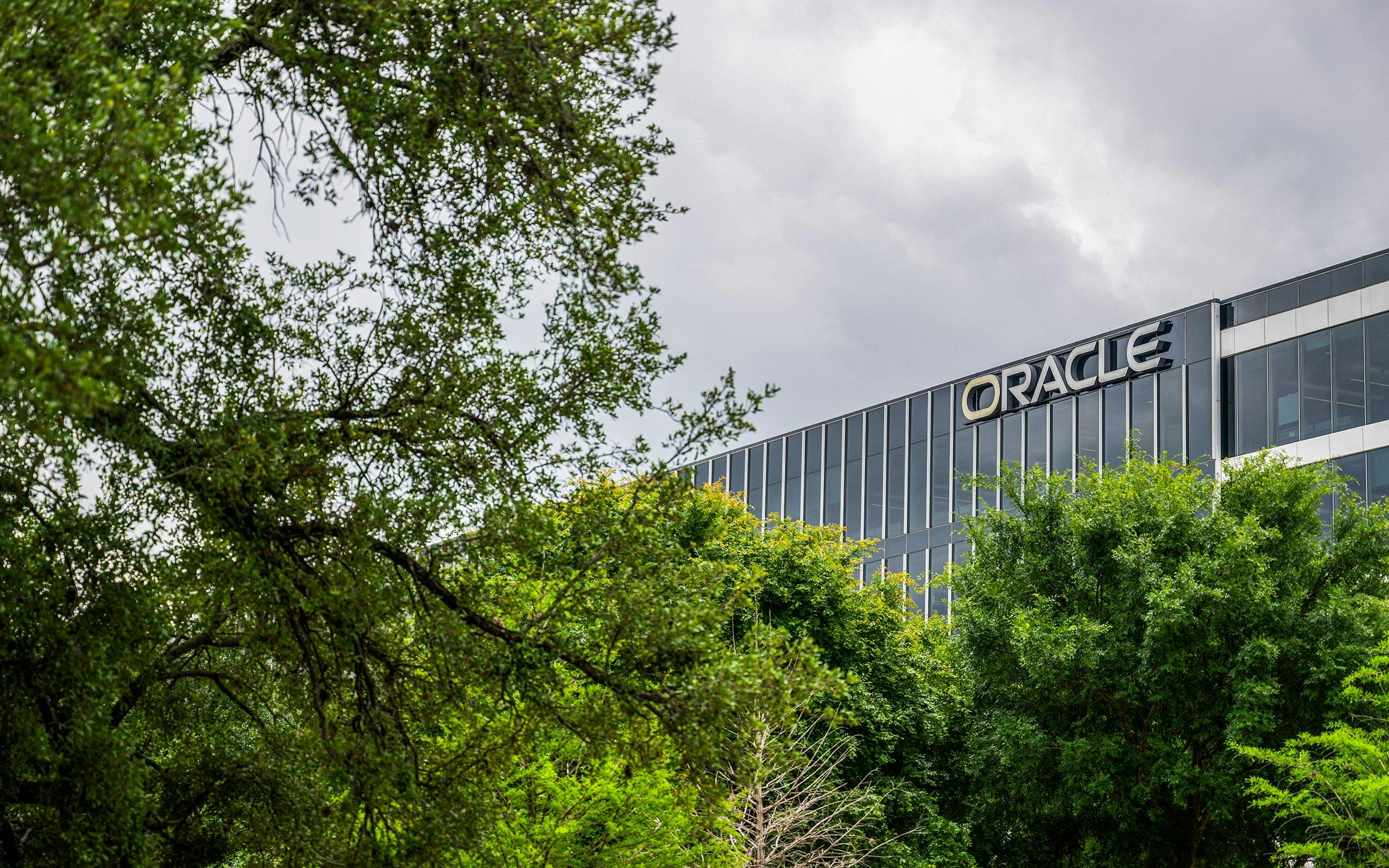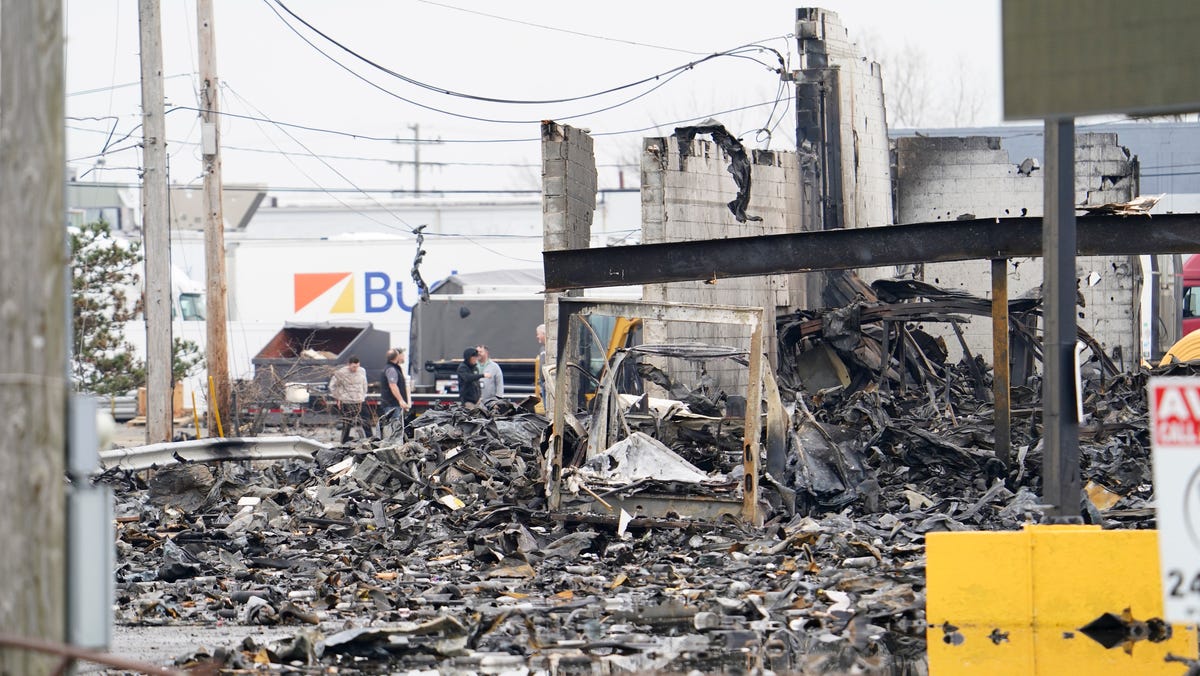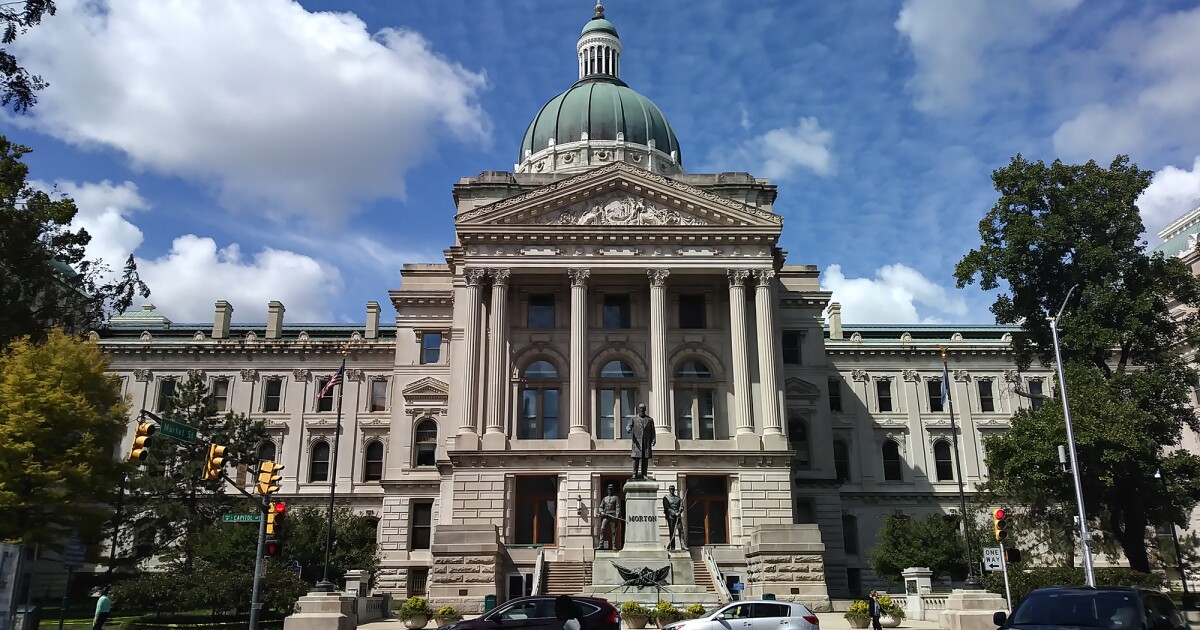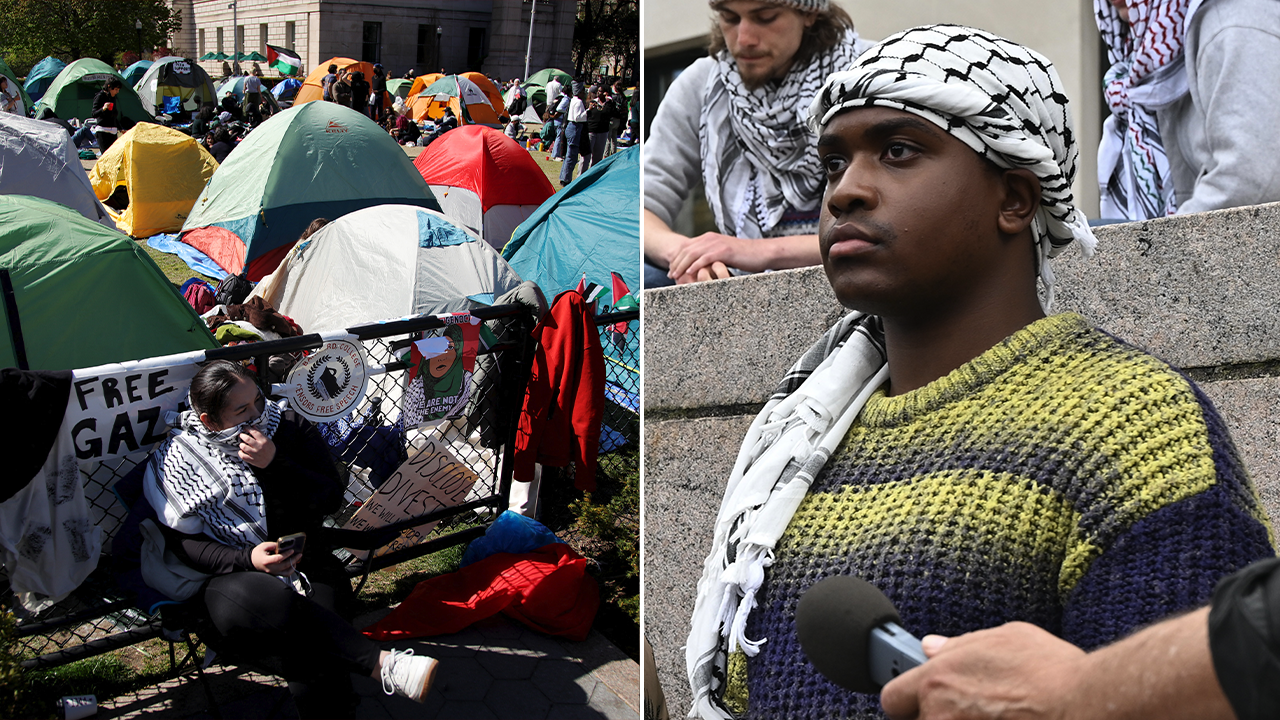California
Millions of people in California at high risk of life-threatening flooding | CNN
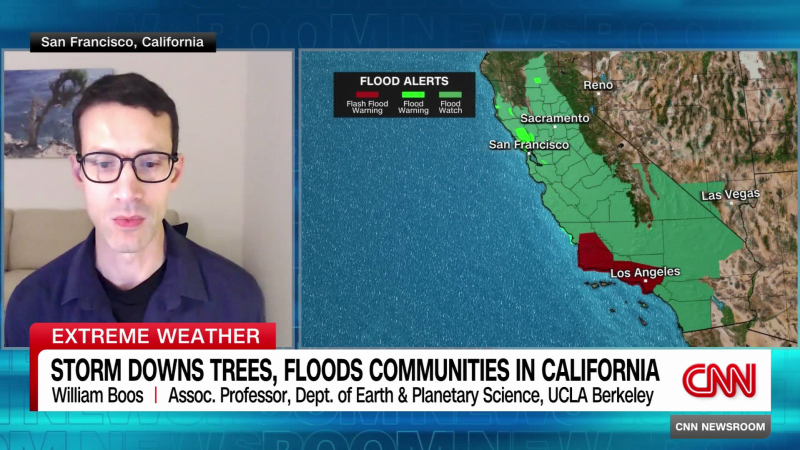
Millions of people in California at high risk of life-threatening flooding
Millions of people are now under flood watches throughout California. Rosemary Church speaks to William Boos, an Associate Professor with the Department of Earth and Planetary Science at the University of California at Berkeley, about the atmospheric river hitting the state.

California
Here's the Real Reason PG&E Rates Are Skyrocketing in California
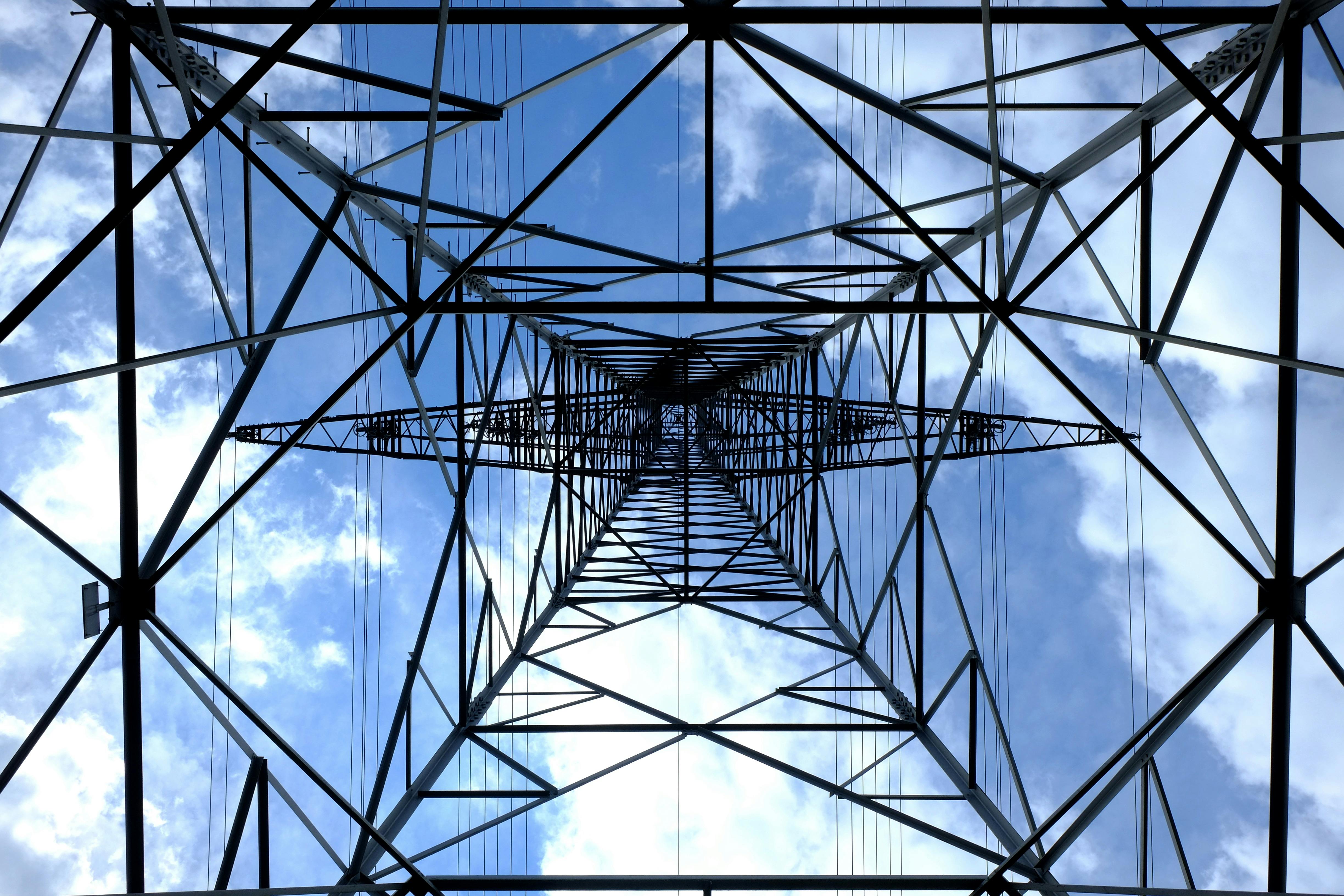
California now holds the ignominious prize for the highest electricity rates in the nation, except Hawaii. How did we get into this predicament?
Because the California Public Utilities Commission — the five-member agency appointed by Governor Gavin Newsom that regulates the prices, service and reliability of private energy utilities — has failed to do its job.
There are other government entities that hand out cookies to energy companies without a care for who pays the bill. But the buck stops at the Public Utilities Commission to protect utility customers.
When a private utility like PG&E decides it needs to build new infrastructure — say, to protect against wildfires — it’s the commission that determines if the infrastructure is necessary, if the utility’s proposed costs for that infrastructure are fair, and if better and cheaper alternatives exist.
The commission enjoys limited scrutiny by the courts. Decisions made by other state agencies can be appealed to Superior Court. But only an appellate court can hear commission appeals, and taking that case is discretionary. This limited judicial review means that the Public Utilities Commission essentially answers to the governor alone.
As a former commission president, I know what keeping energy prices down requires: a sharp pencil to control relentless spending requests from utilities that allow them to generate more profits, adherence to legal mandates that require it to protect ratepayers and allow only “just and reasonable” costs and the backbone to just say no to the utilities’ unceasing demands that customers pay for programs that are ineffective or unnecessarily expensive.
None of this is happening, and Californians should be outraged.
Last November, the commission authorized a historic rate increase — more than $2.56 billion for PG&E’s 2023-2026 general rate case spending estimates. PG&E applied to the commission to charge its customers for the costs of running its gas and electricity businesses, including new infrastructure, system maintenance, and employee and management salaries.
That rate increase hits in stages. The commission let PG&E charge its customers immediately for the first $1.3 billion, painfully hitting in January’s bills. But that’s not the end to commission-permitted rate increases: The utility will collect $716 million more in 2024, $359 million in 2025 and $204 million in 2026.
The commission allowed these increases despite its administrative law judge’s initial decision finding that PG&E’s evidence justified a much smaller rate hike. (The commission employs administrative judges to independently vet whether or not utilities have proved that they are entitled to charge their customers for their costs.)
The administrative law judge’s decision hinged on whether PG&E’s spending was “just and reasonable” — the legal prerequisite for approving any utility cost. Instead, politically appointed commissioners overruled the judge and gave PG&E the vast bulk of what it wanted despite what the facts support.
Before the ink on PG&E’s unprecedented 2023 rate increase was dry, the utility came back, asking the commission to order its customers to pay over $4 billion more for Diablo Canyon nuclear power plant costs, power purchases from electricity generators and infrastructure upgrades for “energization” efforts.
PG&E wants $691 million of that upfront — paid now — before the Public Utilities Commission even evaluates whether those costs are just and reasonable.
Adding insult to injury, in its March 12 decision, the commission handed PG&E yet another increase of $516 million — to take effect immediately. This time the commission dispensed with pesky legal requirements for evidentiary hearings, testimony or proof of PG&E’s asserted costs. By not even attempting to evaluate the reasonableness of the utility’s demands, commissioners set a new low in disregarding the law, which allows the commission to increase rates only after it holds a hearing that includes testimony under oath and cross-examination of PG&E’s witnesses.
In its decision, the commission admitted that granting PG&E half a billion up front, based only on PG&E’s word, “departs from the general requirement to raise rates only after the costs are determined reasonable.” Despite PG&E’s admission that its original $5.7 billion expense estimate actually only totaled $2.7 billion, commissioners approved the increase anyway, only timidly admonishing that “PG&E should be more transparent at the outset to assist with decision-making.”
What should have occurred?
Formal hearings, with PG&E’s witnesses testifying under oath about the true amounts of their asserted costs. The commission should have followed the law that requires PG&E to prove that its costs are “just and reasonable” — before forcing its customers to pay more. The law requires public, rules-based fact determinations about what money is really needed to provide safe and reliable service versus what constitutes frivolous, unnecessary or profit-plumping projects.
The commission blithely maintains that it will review PG&E’s actual costs later — years from now. If unreasonable costs are found, it will order refunds of the money PG&E took from its customers.
But PG&E will almost certainly fight such refunds by scaring future commissioners into inaction, claiming that “the markets” have expected them to keep the money so it can’t be taken away.
Kowtowing to PG&E despite the evidence and the facts — or in this latest case, raising rates without any evidence or facts — shows the Public Utilities Commission’s utter indifference to the hardships these rate increases impose on California’s families and businesses.
Now, a new commission scheme is set to create a “fixed charge” on top of current pay-as-you-use prices, which would be marginally reduced, only for residential customers, under the plan.
On March 27, an administrative law judge published a proposed decision that, if approved in May, will impose a new fixed $24.18 monthly charge on residential customers not eligible for low-income discounts. The commission touts this proposal as a win because it set the charge significantly lower than the $70-$90 the utilities initially proposed. But the new charge still exceeds twice the national average for similar charges.
Fixed fees are the start, not the end, of more rate increases because the commission doesn’t prohibit the fixed charge from increasing whenever PG&E wants. The plan lacks safeguards against utility double-dipping, so it will be hard to tell whether the costs embedded in this new fixed charge are duplicated in other cost-recovery requests. Even PG&E’s low-income customers are not protected — they already pay more than the average customer in the Sacramento Municipal Utility District.
The Public Utilities Commission’s rubberstamping of unproven, unwarranted, unjust electricity costs must stop. It is up to the state Legislature to inject sanity into the regulatory system and protect California families and businesses from ruinous, undeserved rate increases.
Thankfully, legislators have introduced AB1999 to stop this increase and cap any fixed charge at $5 for low-income customers and $10 for other customers. AB2054 would stop the revolving door of former commissioners moving to jobs with utilities and scrutinize utility funds, and SB938 would stop ratepayers from paying for utility lobbying and advertising, among other reforms.
Passing these bills would be important first steps to reining in California’s rogue Public Utilities Commission and halting runaway energy rates.
More robust oversight by the Legislature is needed. Without it, you can expect your energy bills to continue to skyrocket.
Loretta Lynch is a former president of the California Public Utilities Commission and an attorney in San Francisco.
California
Here’s why Weinstein’s conviction in California stands a better chance
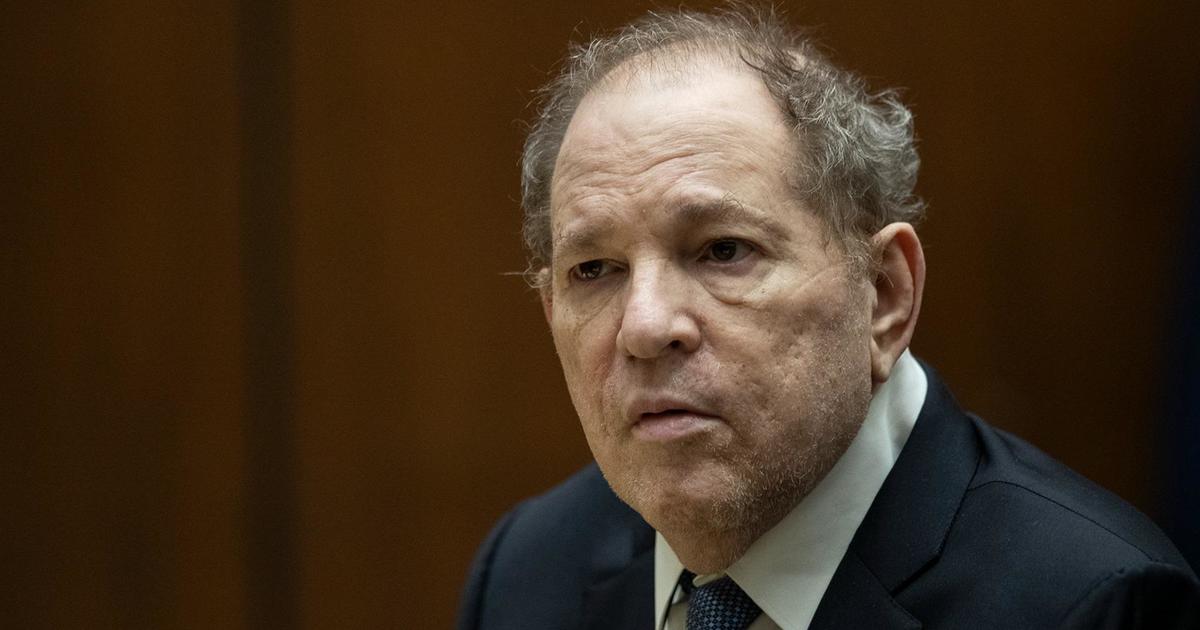
Harvey Weinstein may be getting a new trial in New York after the state’s highest court tossed out his 2020 felony sex crime conviction. But his case in California likely won’t face the same fate, according to Los Angeles prosecutors and legal experts.
In December of 2022, a Los Angeles jury found Weinstein guilty of several counts of sexual assault and was sentenced to 16 years in prison two months later.
The major difference between the two cases is how each state handles the admission of evidence of uncharged allegations.
In California, state law allows the admission of allegations of sexual offenses not listed in the indictment — specifically in sex crime cases, in accordance with California Evidence Code section 1108. Prosecutors can bring forth evidence of a defendant’s past sexual misconduct, calling in witnesses whose accusations are not part of the charges against the defendant.
But in New York, no such law exists. In fact, the state specifically bars the admission of such evidence.
In its 4-3 decision Thursday, the state’s Court of Appeals described the allowance of such evidence during Weinstein’s trial as a series of “egregious errors.” In addition to several uncharged allegations of sexual misconduct, the Manhattan District Attorney brought forth evidence of things like Weinstein allegedly threatening violence against people who worked for him or photoshopping a female actor’s head onto another woman’s nude body.
The New York appeals court described such evidence as “irrelevant, prejudicial, and untested,” portraying him in a “highly prejudicial light” while trying him on charges of first-degree criminal sexual act and third-degree rape.
New York state law bars the admission of evidence of prior uncharged crimes or allegations in accordance with the “Molineux rule,” named after the landmark People vs. Molineux case. An appeals court acquitted Roland Burnham Molineux of murder in a ruling that established the “Molineux rule” as a constitutional safeguard protecting a defendant from the assumption of guilt because they committed other, similar crimes in the past.
In a statement, the Los Angeles County District Attorney’s Office said it was “saddened” by the New York appeals court’s decision. However, the DA’s office noted how the New York case is different from the one in California.
“The legal issues identified by the New York Court of Appeal are not present in the Los Angeles County case,” the DA’s office said.
Weinstein’s lawyer, Arthur Aidala, applauded the overturning of his New York conviction in accordance with state law.
“We knew Harvey Weinstein did not get a fair trial,” Aidala said during a news conference Thursday afternoon. “There are some people who are unpopular in society but we still have to apply the law fairly.”
Weinstein is currently incarcerated in New York at the Mohawk Correctional Facility.
On Friday, Gloria Allred called the conviction reversal a “cry out” for changes to New York state law. She called for a similar law as the one in California during a news conference alongside her client, Mimi Haley, one of the victims in the New York case.
“In California, we have a specific statute,” Allred said, referring to Evidence Code section 1108, which allows such evidence in sex crime cases.
“I think it’s important for the New York legislature to pass a specific statute in New York, which more clearly defines the admission of prior bad acts, witnesses and their testimony in New York — and is more protective of victims’ rights,” Allred said.
Haley said hard evidence including witnesses corroborating her allegation against Weinstein should be enough to prove his guilt. Weinstein was convicted of forcibly performing oral sex on her at his New York apartment in 2006. The appeals court tossed out the conviction for that crime but did not appeal Weinstein’s third-degree rape charge involving another victim.
But Haley said evidence of Weinstein’s other alleged sexual misconduct should be considered relevant — whether or not he was actually charged for it.
“I personally do think it’s important information to know about somebody’s character and their pattern,” Haley said.
Allred said the conviction reversal could have a chilling effect on victims, making them more reluctant to come forward and testify before a jury. Meanwhile, prosecutors could decide against filing charges for fear of making too weak of a case, particularly when dealing with defendants who have the kind of resources and legal representation as Weinstein, she said.
“They may feel that it’s more difficult without (evidence of) prior bad acts to prove guilt beyond a reasonable doubt, and therefore, they may decide not to charge the defendant or seek to indict at all — especially in high profile cases against the rich, the famous the powerful, well-connected defendants.”
While saying she does have some reservations, Haley said she would “consider” testifying against Weinstein in a new trial. She said preparing for the trial took two years and she faced harassment, but she wants to keep “speaking truth to power.”
“It’s a crucial moment in history to keep going and to keep standing up for truth,” she said.
California
A Step Towards Healing and Restoration: California to Support the Return of Ancestral Tribal Lands and Lands Management Projects | California Governor

WHAT YOU NEED TO KNOW: As part of an ongoing truth and healing process, California is supporting the return of over 38,000 acres of ancestral land to tribal stewardship and advancing nature-based solutions projects on tribal lands.
SACRAMENTO – As part of a first-in-the-nation effort to address historical wrongs committed against California Native American tribes, Governor Gavin Newsom today announced that the state has awarded more than $100 million for 33 tribal land projects. The funding, which was appropriated as part of the 2022-23 and 2023-24 state budgets, will be used for ancestral land return, implementation of Traditional Ecological Knowledge and tribal expertise, habitat restoration, climate and wildfire resilience projects, and more.
WHAT GOVERNOR GAVIN NEWSOM SAID: “These awards are an acknowledgment of past sins, a promise of accountability, and a commitment to a better future – for the land and all its people, especially its original stewards. Only through partnership with California Native American tribes can we address the climate and biodiversity crisis and build a healthier California.”
WHAT THIS MEANS: As part of the administration’s Native American truth and healing process, the Governor has worked collaboratively with tribes to establish the historic Tribal Nature-Based Solutions grant program. Designed to support tribal priorities – as determined by tribes themselves – grants can be used for ancestral land return, restoration, workforce development, implementation of Traditional Ecological Knowledge and tribal expertise, habitat restoration, and climate and wildfire resilience projects.
“Today marks a pivotal moment in our journey towards healing and reconciliation,” said Chairman Kevin Osuna, Iipay Nation of Santa Ysabel. “This award is not merely a financial contribution; it is a symbol of solidarity, a recognition of our inherent rights, and a commitment to stewarding our ancestral lands. With these funds, we will not only secure the physical boundaries of our land but also lay the foundation for a future where our children, grandchildren and local communities can thrive, rooted in the strength of our heritage.The Tribal Nature-Based Solutions are engrained in our traditional ways of life, and we are eternally grateful for the opportunity, as generational healing requires more than just the restitution of land; it demands the restoration of dignity, the preservation of culture, and the empowerment of our people. Let us remember those who came before us, whose sacrifices paved the way for this moment. Let us also honor our descendants, whose futures we hold in our hands. As traditional stewards, our tribe looks forward to welcoming the general public to experience the beauty, wonder, and wisdom of our ancestral homelands. Eyaay Ahan.”
“This sacred land is for our future generations, and the Kashia Band of Pomo Indians are committed to preserving the natural resources and cultural heritage of our people,” said Chairperson Dino Franklin with the Kashia Band of Pomo Indians. “We look forward to working closely with the state and local communities to ensure that this land is protected and cared for in a sustainable manner.”
“As California works to address the climate crisis, we can learn from the state’s historical wrongs by fully embracing opportunities to equitably and meaningfully partner with California Native American tribes to tackle these shared challenges,” said Tribal Affairs Secretary Christina Snider-Ashtari. “The investments from the Tribal Nature-Based Solutions Grant Program are the first in the nation directly supporting ancestral land return and ensuring tribal stewardship has a critical role in the broader conservation goals benefiting all of California.”
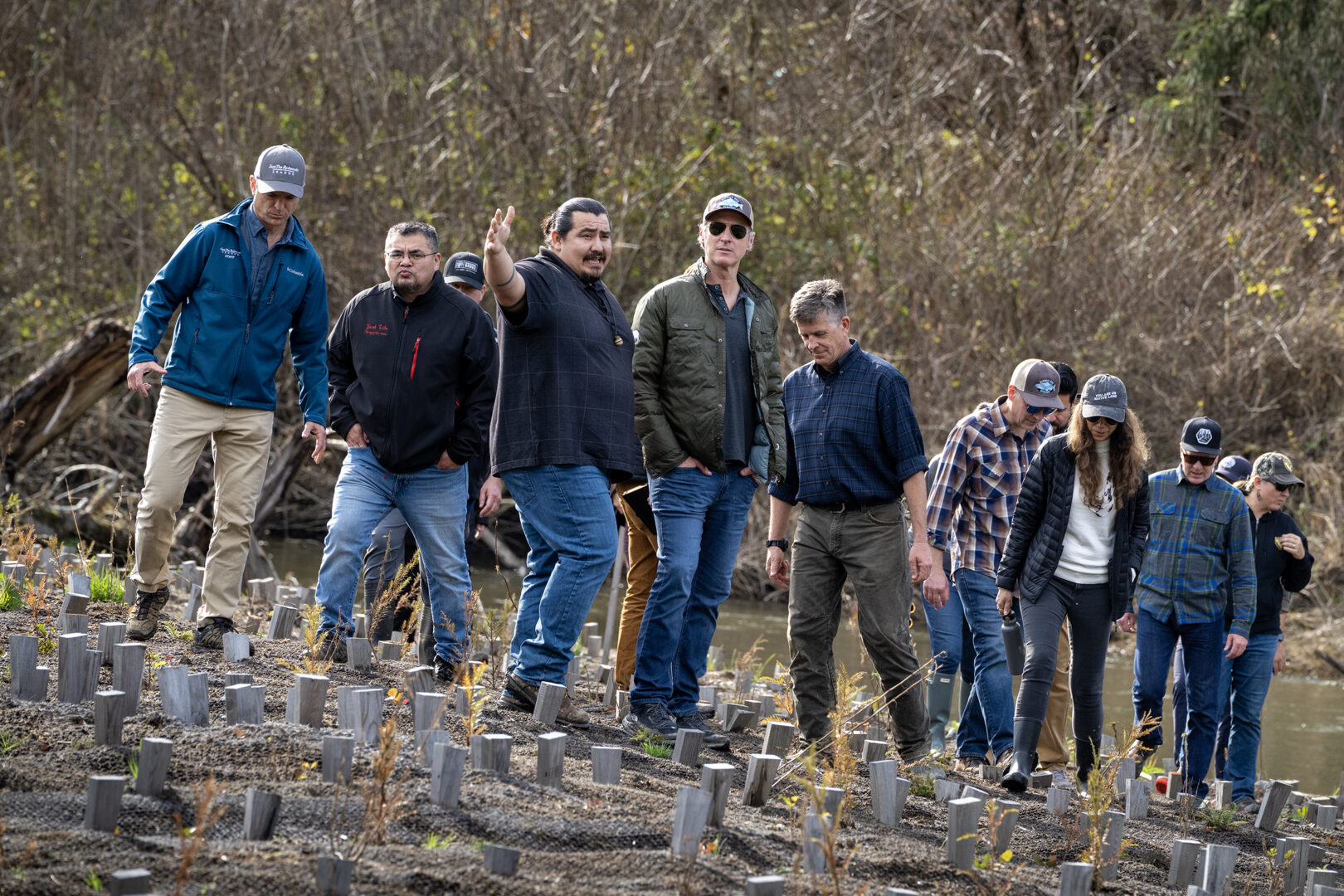
Visiting Native planting sites with members of the Yurok Tribe.
Early funding, as offered to time-sensitive and shovel-ready projects, went to the Hoopa Valley Tribe to acquire 10,395 acres of forested property and return Hupa Mountain to tribal stewardship. The Hoopa Valley Tribe’s ribbon-cutting ceremony for this ancestral land return is scheduled for May 14th.
“Supporting tribal leadership is essential to meet our most important environmental goals,” said Natural Resources Agency Secretary Wade Crowfoot. “This funding for ancestral land return and tribally led nature-based solutions is big step toward conserving 30% of California’s lands and coastal waters by 2030, and more broadly to help people and nature thrive together across California. It represents a downpayment on the state’s commitment to strengthen partnership with California Native American tribes in years and decades to come.”
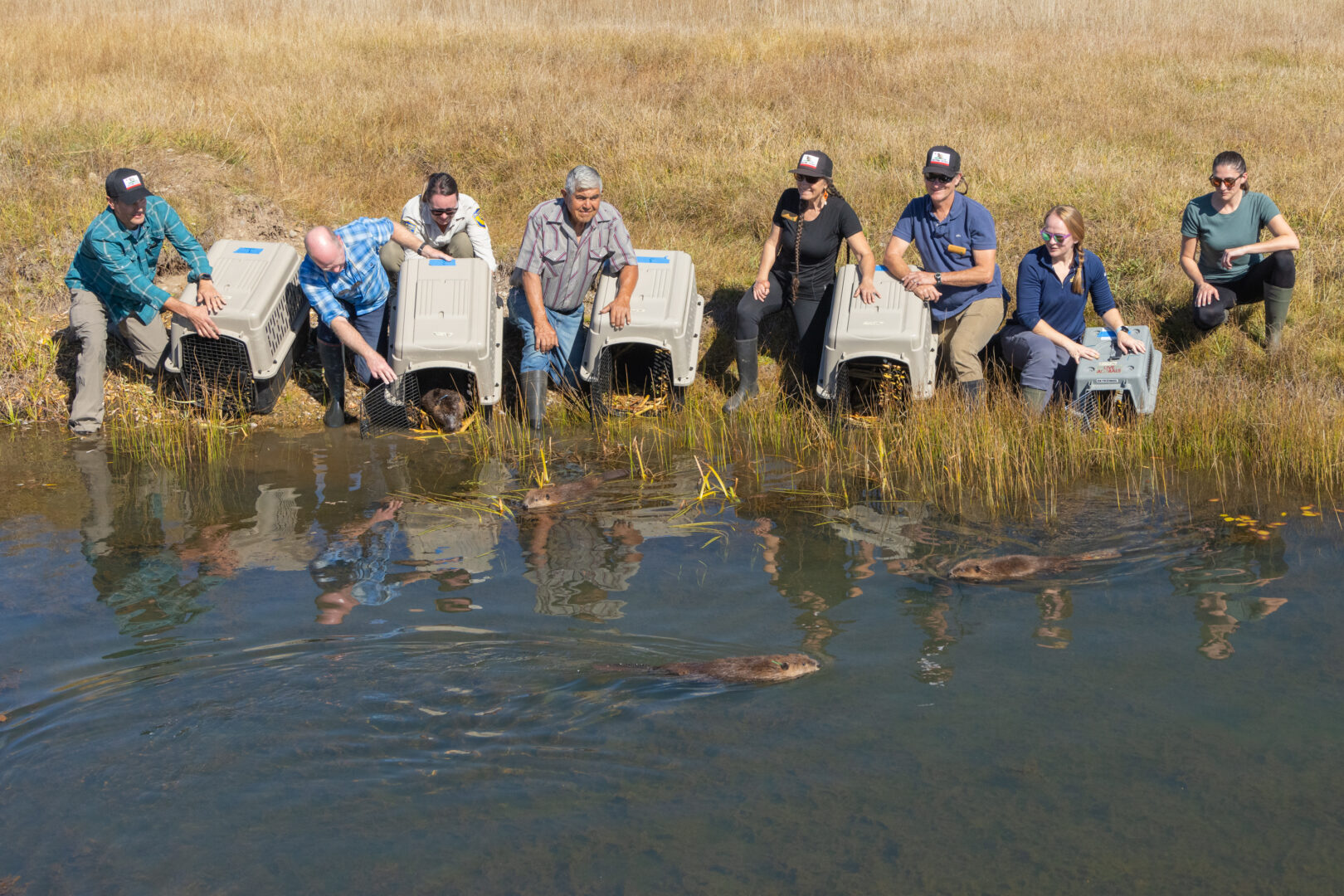
Releasing beavers into the waters on the ancestral lands of the Mountain Maidu people.
BIGGER PICTURE: Many of these projects will also help bring California closer to our ambitious goal to conserve 30% of lands and coastal waters by 2030, also known as the 30 x 30 initiative. The initiative builds on the Governor’s direction for state entities to work cooperatively with California Native American tribes in returning ancestral lands to tribal ownership in excess of state needs, and support California tribes’ co-management of and access to natural lands within a California tribe’s ancestral land.
See the full list of recipients and learn more about today’s announcement here.
###
-

 Movie Reviews1 week ago
Movie Reviews1 week agoMovie Review: The American Society of Magical Negroes
-

 World1 week ago
World1 week agoIf not Ursula, then who? Seven in the wings for Commission top job
-

 Kentucky1 week ago
Kentucky1 week agoKentucky first lady visits Fort Knox schools in honor of Month of the Military Child
-

 World1 week ago
World1 week ago'You are a criminal!' Heckler blasts von der Leyen's stance on Israel
-

 News1 week ago
News1 week agoHouse passes bill requiring warrant to purchase data from third parties
-
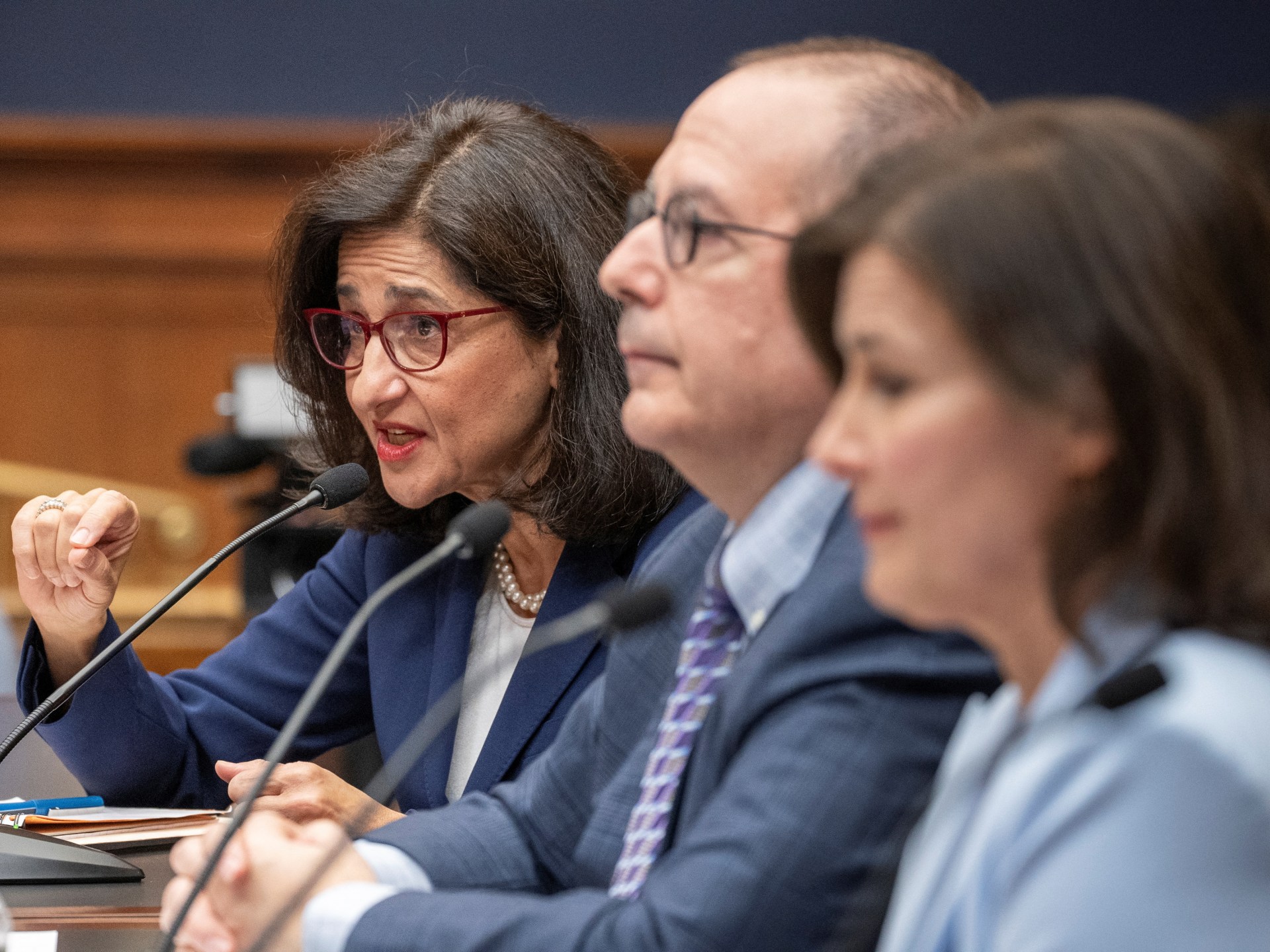
 World1 week ago
World1 week agoColumbia University leaders face scrutiny over anti-Semitism on campus
-

 Politics1 week ago
Politics1 week agoTrump trial: Jury selection to resume in New York City for 3rd day in former president's trial
-
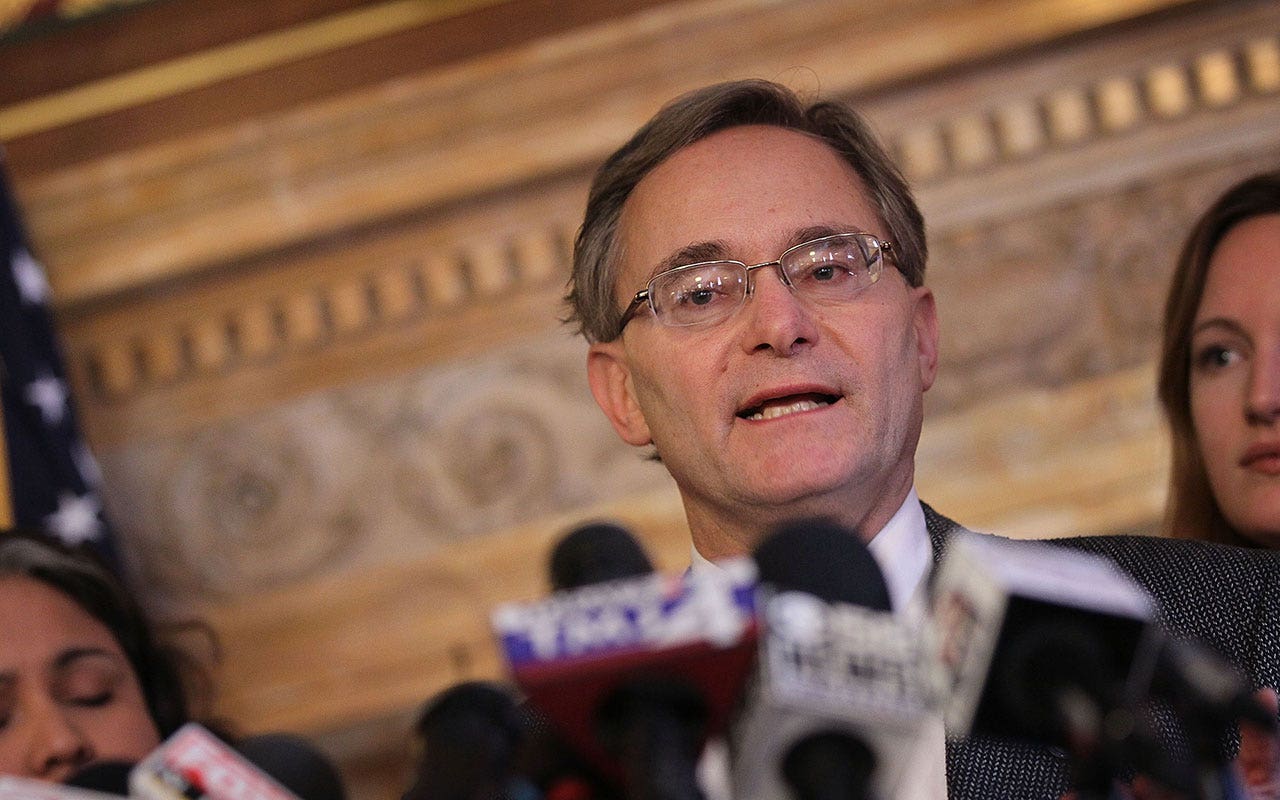
 Politics1 week ago
Politics1 week agoFormer Wisconsin Democratic Rep. Peter Barca launches congressional comeback bid


